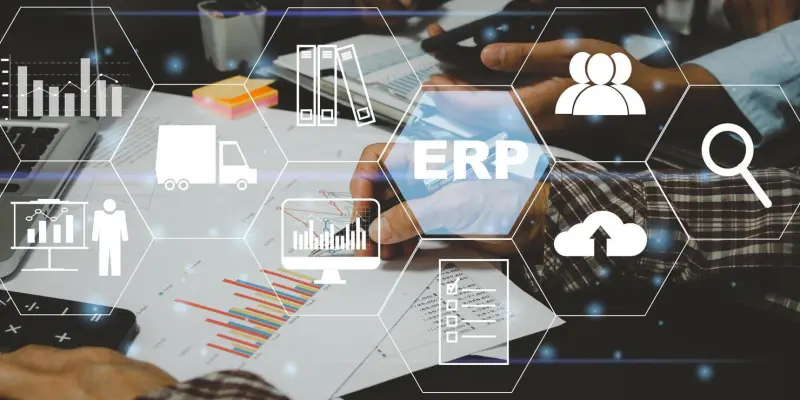Business Central, a component of Microsoft Dynamics 365, stands out as a dynamic Enterprise Resource Planning (ERP) system that addresses contemporary business needs while preparing for future demands. Recognized as a top ERP software solution, it integrates disparate business functions such as finance, operations, sales, and service with a seamless connection to Microsoft 365, Teams, Power Platform, and Azure. This tight integration simplifies processes, enhances productivity, and supports digital transformation efforts. In an era dominated by artificial intelligence and cloud computing, Business Central positions itself as a cornerstone for businesses eager to evolve. As organizations worldwide strive for digitization and efficiency, Business Central emerges as a forward-thinking choice grounded in scalability, AI integration, and a robust security framework.
Scalability and Enhanced Intercompany Capabilities
Meeting Growing Business Needs
As businesses evolve, their ERP systems must keep pace with expanding needs and increasing complexity. Business Central offers unprecedented scalability, allowing organizations to adapt quickly without disruption. This capability is particularly evident in its enhanced intercompany functionalities, which facilitate efficient collaboration between different entities within an organization. By centralizing financial operations, businesses can achieve transparency and consistency, ultimately leading to better financial management and strategic decision-making. This level of integration ensures that even as an organization grows in complexity, its processes remain streamlined and cohesive.
A Unified Approach to Operations
Business Central’s capacity to scale extends beyond just finance, unifying all operational facets under a single framework. By facilitating the integration of various departments, it breaks down silos, promoting a holistic approach to business operations. This unity ensures consistency, minimizes errors, and enhances overall operational efficiency. As businesses aim to remain competitive in a rapidly changing landscape, this unified approach provides the agility to pivot swiftly and respond to market changes without compromising efficiency.
AI Integration and Data-Driven Decision-Making
Transformative Power of Predictive Analytics
Incorporating artificial intelligence into business processes is no longer optional for companies aiming for substantial growth and efficiency. Business Central capitalizes on this trend by integrating AI capabilities such as Microsoft Copilot. This feature brings predictive analytics to the forefront, empowering businesses to make informed decisions from comprehensive data analyses. Predictive analytics enable companies to anticipate market fluctuations, adjust strategies proactively, and optimize operational routines. Such capabilities provide a more accurate understanding of consumer preferences, market trends, and potential disruptions, placing businesses steps ahead of their competition.
Facilitating Adoption Through Familiar Tools
A significant barrier to adopting new technology systems is the learning curve and adaptation required. Business Central addresses this challenge by integrating seamlessly with widely used Microsoft tools and platforms. Employees can leverage familiar interfaces and navigation, easing the transition and enhancing productivity. Personalized onboarding experiences further facilitate rapid adoption, ensuring that users can harness the software’s full capabilities without extensive training periods.
Security and Strategic Integration for a Digital Future
Ensuring Robust Security and Compliance
Data security and governance remain paramount as businesses transition to digital-first operations. Business Central provides a comprehensive security framework that ensures transparency, trust, and the responsible use of AI. By adhering to stringent data governance standards, it provides peace of mind to businesses concerned about data breaches and compliance issues. This security framework aligns with global standards, ensuring that companies across various jurisdictions can rely on its robustness. Given the increasing frequency of cyber threats, a rigorous security approach is essential for any ERP system, as it protects sensitive business information and enables compliance with evolving regulations.
Building a Cohesive Digital Ecosystem
The integration of Business Central with other Microsoft services builds a cohesive digital ecosystem where various applications and systems communicate effectively. This setup not only ensures seamless operations but also supports long-term digital strategies aimed at fostering innovation and operational efficiency. The comprehensive integration with Power BI and Azure provides real-time insights, allowing businesses to align ERP data with strategic objectives.
Digital Readiness and Future Considerations
Business Central offers scalability far beyond mere financial aspects by combining all operational elements within a single framework. It fosters seamless integration across various departments, dissolving barriers and encouraging a comprehensive approach to managing business operations. This unified system enables departments, whether in sales, customer service, or finance, to access and work with the same set of data. Such cohesion ensures consistency, reduces errors, and boosts operational efficiency across the organization. As companies strive to stay competitive in a fast-evolving environment, this integrated strategy provides the flexibility needed to pivot quickly and adapt to market dynamics without sacrificing efficiency.

